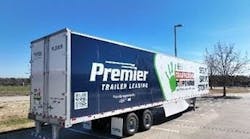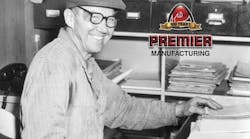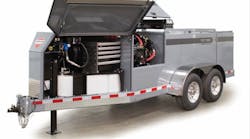More “virtual testing” of truck and trailer designs is expected to be deployed to reach the required fuel economy goals in the Phase 2 greenhouse gas (GHG) reduction mandates.
“Manufacturers are more focused than ever on improving fuel economy, and also on meeting new GHG regulations in the best ways possible – and that’s driving testing needs to a higher level,” explained Doug Hatfield, managing director-heavy vehicles for the Americas at fluid and aerodynamics simulation software provider EXA.
“[Fuel economy] improvements are becoming harder and harder to identify and realize because all of the low-hanging fruit is gone,” Hatfield told Fleet Owner.
According to the Environmental Protection Agency (EPA) – which along with the National Highway Traffic Safety Administration (NHTSA) developed both the Phase 1 and Phase 2 GHG rules – the key GHG metric for highway tractors is “freight efficiency,” or the amount of freight that can be hauled per mile, per gallon of fuel.
Thus by the time Phase 2 GHG rules take full effect in 2027, the EPA estimates the average line-haul truck would achieve a 50% improvement, with that potentially rising to 90% with the development and adoption of any new and more efficient technologies.
In raw miles per gallon (MPG) figures, experts at the Environmental Defense Fund translate that 2027 goal into about 9.5 mpg for highway tractor-trailers compared to the roughly 6 mpg they averaged in 2010.
Making such a big leap in fuel economy is why some truck OEMs feel a “total vehicle approach” will be needed to comply with the Phase 2 GHG goals.
“Fuel efficiency is a function of many variables. In addition to the engine, aerodynamics, tires, driveline configurations, transmissions, the operator driving the vehicle, and many other factors play a significant role,” Stu Russoli, highway and powertrain products marketing manager for Mack Trucks, told Fleet Owner. “Because there are so many factors, we prefer to take a complete vehicle approach to fuel efficiency.”
Yet navigating all the requirements within the Phase 2 rules is one reason more sophisticated testing approaches will be needed.
“The Notice of Proposed Rulemaking for the Phase 2 regulations is well over 2,000 pages in length; it will require significant analysis,” Russoli added. “We need more time to fully review the proposed rules before we’re able to comment further.”
That’s another reason why EXA’s Hatfield feels an ongoing change in testing methods will play an important role in winkling out Phase 2 solutions, in terms of “single” versus “multi-parameter” design evaluation capability.
“Physical tests are single-parameter in order to be effective. You run a test, make one change to one component and run another test,” he noted. “With multi-parameter optimization, you get to see how changing multiple component designs affect each other, while evaluating hundreds of points in design between the baseline and final design – all conducted overnight.”
For example, he said engineers using simulation software can evaluate a front fascia design and trailer skirt design to optimize how both work best together. “Moving away from single-point to multi-parameter optimization studies is key to discovering new, more refined opportunities to improve fuel economy,” Hatfield believes.
“The reality is that the greenhouse gas rules are putting more incentives and pressure on manufacturers to reduce the footprint,” he added. “Simulation software removes the guesswork of how a design will perform in the critical regulatory tests as well as determining the real-world fuel economy gains.”








